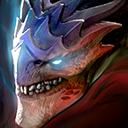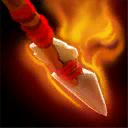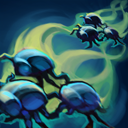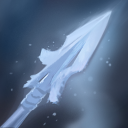Playing Carry - The Basics
Sando
March 26, 2014
Introduction
This guide will take you through all the basics of how to play a carry role, and give you some knowledge about how they fit in with the rest of the team.
Playing carry can be incredibly rewarding - if you get it right you could be stomping all of the opposition team in every fight and feel like you're winning the game single-handely.
Carry is also a tricky role though - you've got to do a lot of farming, make some difficult choices on which items to buy, and vital decisions during fights.
What is a Carry?
The term "Carry" comes from the way your team has to "carry" you through the early game when you're vulnerable, and that later in the game you will "carry" them.
Carries are essentially the opposite of support heroes - they usually rely primarily on their right-click attack to deal damage, and need a lot of farm and items to maximise this. They're generally somewhat weak in the early game, but get stronger and stronger as the game progresses.
Why are Carries better in the late game?
There's a number of factors at work here:
- They'll generally be given the farm, so can buy better items, and then farm faster with those better items
- They generally have passive skills that require more levels/equipment to really become effective
- They have high stats growth from levelling, especially in their primary stat
- Many carries are agility heroes, so lack health & mana in the early game, but gain massive attack speed and armour later on
The way that DOTA skills work mean that most do a set amount of damage when used - for instance Power Shot. As you level it up from 1 to 4, it does more and more damage. However, you can't upgrade it past level 4, and very few items in the game ( Veil of Discord) do much to increase nuke damage.
Veil of Discord) do much to increase nuke damage.
As heroes continue to gain hitpoints, the % amount of that total that a nuke spell is capable of inflicting will fall and fall. So a spell that took 50% of a heroes HP off after 5 minutes, might only do 10% after 30 minutes. This is usually why most players max their nuking skills as soon as possible.
Passive skills on the other hand can continue to scale well throughout the game. Getting a 25% bonus on your primary attack near the start of the game might only be worth 5-10 damage, but later on it could be worth 100 or more, on top of your faster attack speed, orb effects etc.
Unless the game ends early, right-click attacks will usually become dominant over time.
What's the difference between Carries, Semi-Carries and Hard Carries?
The major differences are to do with how much farm these heroes require to become effective, and how well they scale with extra equipment and levels.
Semi-Carries:
This is actually a very broad category of heroes; as a lot of semi-support heroes can also be played this way provided they get enough farm/kills. Generally semi-carries peak earlier in the game, but gradually lose to "proper" carries unless they can maintain a strong farm/experience advantage.
Generally they lack the attack speed or set of passives that would allow them to become a true carry.
Examples:  Death Prophet,
Death Prophet,  Night Stalker or
Night Stalker or  Clockwerk
Clockwerk
Hard Carries:
Very few heroes are true "hard" carries. These heroes are capable of dominating in the late game provided they get the items they need along the way. They tend to have excellent passive skills, and an escape of some kind. However, they need a LOT of gold, and will have to spend the majority of their time farming rather than fighting. The rest of their team has to essentially mount a holding action until they can get strong enough to join in.
Examples:  Anti-Mage,
Anti-Mage,  Faceless Void or
Faceless Void or  Spectre
Spectre
Carries:
Somewhere between the other two categories, different carries have their peak at different times in the game (farm/xp depending). Some carries are fairly strong throughout the game, while others specialise in ganking, can initiate or are especially good against other carries.
Examples:  Ursa,
Ursa,  Huskar or
Huskar or  Juggernaut
Juggernaut
Ok so how to do I play Carry?
Carries are essentially in a race through the course of the game...they need to not only get big and strong...they need to try and do it faster than the enemy ones.
The main skill you need as a carry is good last hitting - if you can't last hit consistently, you're going to struggle. The only cure for this practice, practice, and more practice.
The next skill is a good sense of risk/reward when it comes to trying to get kills. You want to get kills if you possibly can, as they give you a big lump of gold and xp, but dying sets you back even more.
Next up, you need a good knowledge and understanding of the items available to you. Sure, you need to know the items that are commonly bought for your hero, but you should also understand the others so that you can grab the appropriate one in unusual situations.
For example, your hero might rarely consider a  Black King Bar, but against a team full of nukers and stunners, it could be a necessity.
Black King Bar, but against a team full of nukers and stunners, it could be a necessity.
Don't just stick with the same cookie-cutter build every game! Adapt!
The final, and most important skills are all to do with those frantic fights that often decide games as they go later. Whoever loses will be spending a long time respawning while their barracks get trashed.
As a carry, you need to know who to focus, where to use your skills to best effect, and when you're going to win or lose a fight. Your team is relying on you to do most the damage, and will be trying to help you out, but it's still your responsibility.
The Ripple Effect
Last hitting is actually hardest right at the start of the game - this is when your hero has the least damage compared to a creep's hitpoints. However, this is also a vital time for farming due to the "Ripple Effect".
Like a stone being thrown into a pond, ripples are created that grow bigger and bigger as time passes and they move away from the point of impact. In the same way, getting last hits at the start of the game gives you money to buy items which help you farm faster, sooner. Farming faster means you can get even more items faster, more kills, and so on.
The actual 300 gold extra you got for those hits may seem like nothing at the end of the game, but if that helped you get a kill, more hits, etc sooner, then it's impact was actually massive - and you would have not have gained anything like so much in total without it.
Tips for Good Farming
Ok, so good last hitting is important. How do I get better at it?
+ Play a lot with that hero to make sure that you're comfortable with their attack animation
+ Have at least some items which boost your damage early on
+ Get used to the amount of damage your hero can inflict at different levels/amounts of farm
+ Get used to the amount of damage creeps can take when under attack from different sources, e.g. Towers, Siege Creeps, etc
+ Try to carefully time your attacks (use the stop button repeatedly if necessary) rather than just wading in and auto-attacking
+ Learn how to use the jungle efficiently with your character, when you can take on the ancients fairly safely, and any other special tricks your character may have (e.g.  Dragon Knight with level 2
Dragon Knight with level 2  Elder Dragon Form vs stacked ancients.)
Elder Dragon Form vs stacked ancients.)
Do I fight or do I farm?
There's no right or wrong answer to this - it all depends on the situation. Hard carries should generally avoid fighting early on unless they think they might be able to pick up a kill or two fairly safely. Semi-carries peak earlier in the game, so there's no point in them wasting their best period on farming.
The other deciding factor is how your team is likely to get on without you - carries have to be somewhat selfish, taking farm, kills, etc - BUT they still win or lose as a team. If you're losing a tier 2 tower and the rest of both teams is there...generally you should be too! There's no point you being ready to fight when the game is effectively over...
On the other hand, you can't afford to spend all your time as a carry running between towers that might be attacked. You should be farming the biggest, safest clump of creeps that you can, as often as possible - turn up if the fight actually starts happening and you can make a difference. Ensure you have a  Town Portal Scroll at all times!
Town Portal Scroll at all times!
Also, be aware of when you hero is most effective - if you're playing a semi-carry or carry, and the enemy team has a hard carry, you are going to struggle against them late game unless you can maintain a farm/level advantage. Don't spend too long farming if your team needs to win before they get too strong.
Even for hard carries, be aware of your team's strengths and weaknesses. Even  Anti-Mage can struggle if the enemy team has more carries in the late game.
Anti-Mage can struggle if the enemy team has more carries in the late game.  Anti-Mage's advantage is his farming speed, if you get a level and farm advantage - USE IT. Once you reach level 25 and have a full inventory, more farm is of limited use to you and you're giving the opposition time to catch up.
Anti-Mage's advantage is his farming speed, if you get a level and farm advantage - USE IT. Once you reach level 25 and have a full inventory, more farm is of limited use to you and you're giving the opposition time to catch up.
Pick an orb, any orb
We're not going to go into massive detail about game mechanics here, but there are a few things worth noting about Orb Effects in case you don't already know about them.
First of all, what is an Orb Effect?
Apparently, this harks back to the old Warcraft 3 days, but essentially it is just a bonus effect that is applied to your right click attacks.
What do I need to know about them?
- Orb effects DONT STACK
- You can only ever have ONE orb effect active at a time
So, basically, you never want to buy more than one Orb Effect type item, or be wary of buying them at all if your hero already has one. E.g.  Huskar's
Huskar's  Burning Spear,
Burning Spear,  Weaver's
Weaver's  Geminate Attack or
Geminate Attack or  Drow Ranger's
Drow Ranger's  Frost Arrows.
Frost Arrows.
Items which provide an Orb Effect include  Desolator,
Desolator,  Helm of the Dominator,
Helm of the Dominator,  Maelstrom,
Maelstrom,  Orb of Venom,
Orb of Venom,  Diffusal Blade and
Diffusal Blade and  Eye of Skadi.
Eye of Skadi.
So for example, our  Huskar has a few points in
Huskar has a few points in  Burning Spear, and lifesteal from
Burning Spear, and lifesteal from  Helm of the Dominator. If we use
Helm of the Dominator. If we use  Burning Spear when attacking, then that will override
Burning Spear when attacking, then that will override  Helm of the Dominator and we won't get the lifesteal. If we did a normal attack without the spears, lifesteal would apply.
Helm of the Dominator and we won't get the lifesteal. If we did a normal attack without the spears, lifesteal would apply.
Armour versus Hitpoints
Carries have to assume they will be focused in team fights - in the late game you're the primary damage dealer and the other team will want you taken out of the fight ASAP.
Armour, Magic Resistance/Immunity and Hit Points all help you stay alive and dealing damage, but you need to carefully consider which one you need in a given situation.
Armour gives you % based protection against PHYSICAL damage - i.e. right clicks and some hero abilities. Good armour (e.g.  Assault Cuirass increases your EHP or "Effective Hit Points", with 50% armour you essentially have DOUBLE your amount of hit points against physical attacks. Armour has NO EFFECT vs MAGICAL DAMAGE, so against teams of nukers is not a priority. PURE damage also IGNORES armour, so some heroes like
Assault Cuirass increases your EHP or "Effective Hit Points", with 50% armour you essentially have DOUBLE your amount of hit points against physical attacks. Armour has NO EFFECT vs MAGICAL DAMAGE, so against teams of nukers is not a priority. PURE damage also IGNORES armour, so some heroes like  Enchantress and Outworld Devourer are not worth stacking it against.
Enchantress and Outworld Devourer are not worth stacking it against.
Magical resistance gives you % based protection against MAGICAL damage, so again effectively increases your hitpoints. There are very few items in the game that increase magic resistance (e.g.  Pipe of Insight), and they may not be appropriate for your hero.
Pipe of Insight), and they may not be appropriate for your hero.  Black King Bar gives you IMMUNITY to magical damage for a short period, and
Black King Bar gives you IMMUNITY to magical damage for a short period, and  Linken's Sphere will block individual casts periodically. Bear in mind that some abilities override this immunity, and you may still suffer the stun if not the damage. Strongly consider against teams with lots of nukes and/or stun.
Linken's Sphere will block individual casts periodically. Bear in mind that some abilities override this immunity, and you may still suffer the stun if not the damage. Strongly consider against teams with lots of nukes and/or stun.
Hit points are something of a catch all, as they work against everything equally. However, they can be less cost effective than armour or magic resistance/immunity if the enemy team heavily favours one over the other. Strength items also increase your hit points, but only add to your damage if you're a strength hero.
At the end of the day, remember that your primary job as a carry is to INFLICT damage rather than soak it up, but you need to be alive in order to do so, so find the right balance of items!
Primary Stat Carry Types
Strength:
Strength carries are usually tanky, melee heroes such as  Dragon Knight or
Dragon Knight or  Lifestealer. They usually have a better time in the early game than agility carries, as their primary damage stat also boosts up their hitpoints.
Lifestealer. They usually have a better time in the early game than agility carries, as their primary damage stat also boosts up their hitpoints.
As the game progresses, they have to ensure that they improve their attack speed as well as their strength, in order to be able to do sufficient DPS. Agility items such as  Butterfly do give them increased attack speed, but they don't gain damage like an agility carry would, so these items are not terribly cost effective.
Butterfly do give them increased attack speed, but they don't gain damage like an agility carry would, so these items are not terribly cost effective.
Items which give you raw attack speed, such as  Armlet of Mordiggian and
Armlet of Mordiggian and  Assault Cuirass are usually preferred.
Assault Cuirass are usually preferred.  Heaven's Halberd also deserves a mention as it can level the playing field somewhat between late game strength and agility heroes.
Heaven's Halberd also deserves a mention as it can level the playing field somewhat between late game strength and agility heroes.
Agility:
Most agility heroes are carries of some sort, or can be played as one. They suffer in the early game as their attack speed/armour bonuses take time and levels to begin to add up. In the meantime they suffer from both lack of Hitpoints and Mana.
Agility heroes tend to be the most damaging in the late game though, and it's no surprise that heroes like  Morphling,
Morphling,  Anti-Mage and
Anti-Mage and  Lone Druid are all agility based.
Lone Druid are all agility based.
Agility heroes need to get farm and levels as quickly as possible, and will often need more babysitting than other carries.
Generally they focus on agility boosting items like  Butterfly or
Butterfly or  Manta Style, and damage boosting items like
Manta Style, and damage boosting items like  Crystalys or
Crystalys or  Daedalus. These items have a % chance of triggering on each attack...so the more often you attack...the more chance of them triggering. The same with orb effects like
Daedalus. These items have a % chance of triggering on each attack...so the more often you attack...the more chance of them triggering. The same with orb effects like  Desolator which will stack up more quickly.
Desolator which will stack up more quickly.
 Battle Fury is also popular for boosting farming speed, but only works properly for melee heroes.
Battle Fury is also popular for boosting farming speed, but only works properly for melee heroes.
Agility heroes also need to consider items which make up for any glaring weaknesses they have in hitpoints or mana.
Intelligence Carries:
True intelligence carries are a fairly rare breed - if we stick strictly to our definition of "right click heroes" then possibly only  Silencer,
Silencer,  Nature's Prophet and
Nature's Prophet and  Outworld Destroyer would count. However, a lot of people would argue (fairly) that
Outworld Destroyer would count. However, a lot of people would argue (fairly) that  Storm Spirit,
Storm Spirit,  Tinker and Necrolyte can also be intelligence carries, as they all scale pretty well or need farm. Several other heroes can also semi-carry.
Tinker and Necrolyte can also be intelligence carries, as they all scale pretty well or need farm. Several other heroes can also semi-carry.
Intelligence carries all tend to have a lot of other abilities around their right click, and their agility growth and hitpoints tend to leave something to be desired. Generally they tend to get items which boost their intelligence while also giving some other bonus or effect.
 Scythe of Vyse is very popular, as it gives excellent intelligence gain, as well as a few stats and a hex.
Scythe of Vyse is very popular, as it gives excellent intelligence gain, as well as a few stats and a hex.  Orchid Malevolence is another common choice, as is the
Orchid Malevolence is another common choice, as is the  Rod of Atos which combines more hitpoints and intelligence in one relatively cheap item.
Rod of Atos which combines more hitpoints and intelligence in one relatively cheap item.
Generally intelligence carries hit very hard, but lack staying power and raw attack speed. They also rely on their abilities and can be brought down easily without them.
Overall they're very damaging in the early-mid game, but need to maintain a farm advantage into the late game to be effective.


















Quick Comment (13) View Comments
You need to log in before commenting.